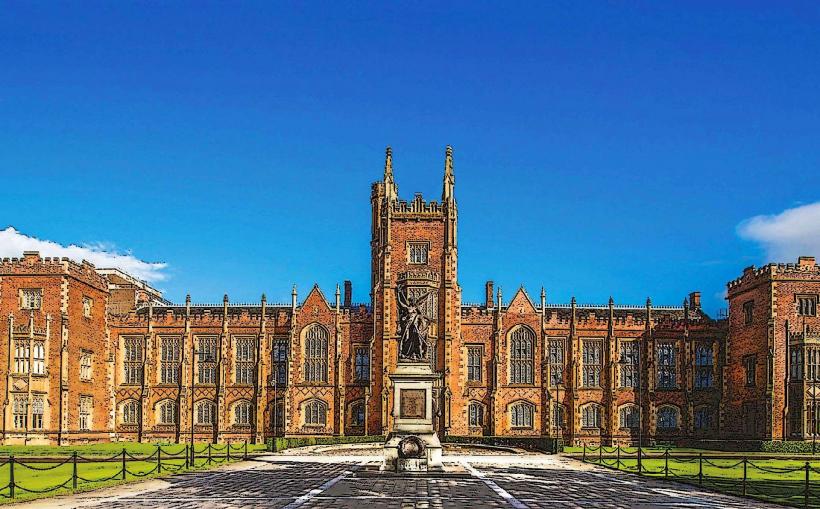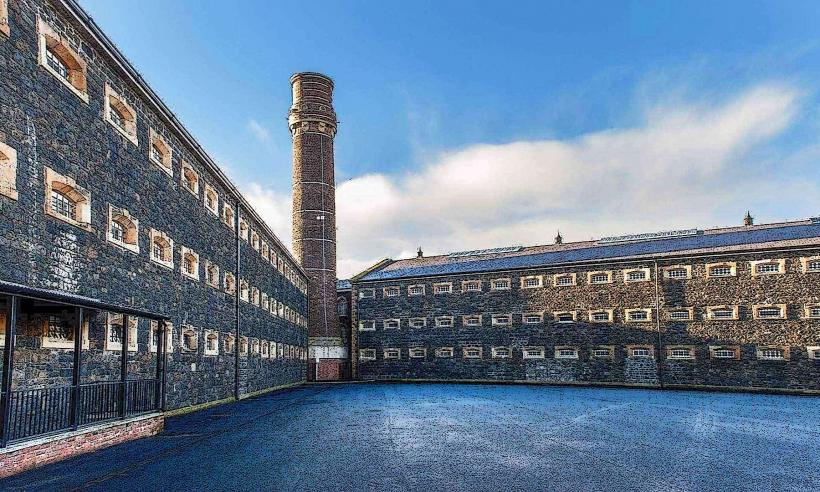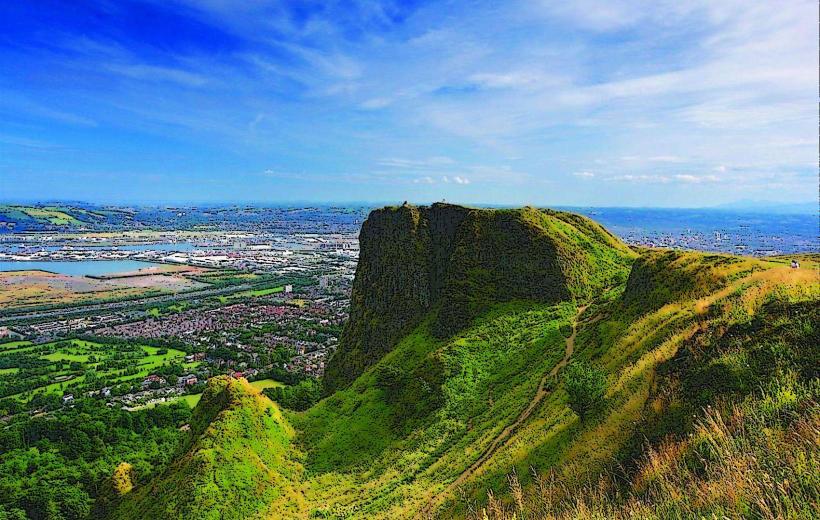Information
Landmark: Giants CausewayCity: Belfast
Country: United Kingdom
Continent: Europe
The Giant’s Causeway is one of Northern Ireland’s most famous natural landmarks, renowned for its unique and dramatic geological formation of interlocking basalt columns that stretch along the coast. This UNESCO World Heritage site, located in County Antrim, attracts visitors from around the world due to its stunning natural beauty, fascinating geological features, and rich mythology.
Geological Formation
Basalt Columns: The Giant’s Causeway is made up of around 40,000 interlocking basalt columns that were formed by volcanic activity. These columns are the result of lava cooling and contracting as it erupted from a volcanic fissure around 60 million years ago, during the Tertiary period.
Hexagonal Shape: The most striking feature of the Causeway is the hexagonal shape of many of the columns, though some are pentagonal or octagonal. The columns vary in height, with some reaching up to 12 meters tall, and they form a natural pavement that leads into the sea.
Geological Significance: The Giant’s Causeway is an excellent example of columnar basalt formations, which are relatively rare but can be found in other parts of the world, such as Iceland and the Faroe Islands. The site is an important geological feature, showcasing the forces of nature at work.
Mythology and Legends
The Giant’s Causeway is also steeped in mythology and local folklore, particularly connected to the legendary Irish giant Finn McCool. According to one famous myth:
Finn McCool and Benandonner: The story goes that Finn McCool, a giant, built the Causeway to Scotland in order to challenge the giant Benandonner to a duel. However, when Finn saw how large Benandonner was, he fled in fear, and the Causeway was either destroyed or submerged in the sea to prevent the Scottish giant from following him.
Finn’s Footprints: Other elements of the mythology suggest that Finn’s footprints can be found on the Causeway and that they were created during his giant steps while building the causeway. Some local legends also state that the causeway was built for other purposes, like helping Finn cross the sea or to serve as a bridge between Ireland and Scotland.
The causeway’s legendary connections to giants have made it a place of fascination and mystery for generations, combining natural beauty with a rich cultural narrative.
Visitor Experience
Visitor Centre: The Giant’s Causeway Visitor Centre offers a modern and interactive experience for visitors, including exhibitions on the geology and mythology of the site. The center provides information about the formation of the Causeway, the history of the surrounding area, and the local flora and fauna.
Walking Trails: The site is equipped with several walking trails, which allow visitors to explore the Causeway and the surrounding area. The Causeway Coast Way is a long-distance walking route that passes through some of Northern Ireland’s most beautiful coastal landscapes, including views of the Giant’s Causeway.
The Causeway Itself: Visitors can walk on the basalt columns themselves, carefully navigating the naturally formed paths, but it’s important to note that the stones can be slippery when wet. There are also specific pathways that guide visitors safely around the site.
The Stone Columns: The most iconic feature of the Giant’s Causeway is the hexagonal columns that form a natural pavement leading into the sea. These columns were formed from the cooling lava of a volcanic eruption around 60 million years ago. As the lava cooled, it contracted and fractured, forming the column shapes. The unique shape and alignment of the columns are one of the most extraordinary sights in the world.
The Organ: Among the formations is one known as The Organ, where the columns are arranged in such a way that they resemble the pipes of an organ. It is one of the most famous and photographed sections of the Causeway.
Giants' Boot: Another interesting formation is known as the Giants’ Boot, a large rock that resembles the shape of a giant’s boot, adding to the mythological allure of the place.
Surrounding Area
Causeway Coast: The Giant’s Causeway is part of the Causeway Coast, an area of outstanding natural beauty. Visitors can explore the surrounding cliffs, beaches, and countryside, with breathtaking views of the coastline, the Atlantic Ocean, and nearby islands.
Bushmills Distillery: Close to the Giant’s Causeway is the Old Bushmills Distillery, one of the oldest licensed whiskey distilleries in the world. It is a popular tourist destination where visitors can learn about the whiskey-making process and sample some of the famous Bushmills whiskey.
Dunluce Castle: A short drive from the Causeway is Dunluce Castle, a dramatic ruin perched on the edge of a cliff. The castle dates back to the 16th century and provides another picturesque spot to visit on the Causeway Coast.
Carrick-a-Rede Rope Bridge: Another nearby attraction is the Carrick-a-Rede Rope Bridge, which spans a 20-meter-wide chasm and offers stunning views of the coast and the sea. The bridge connects the mainland to Carrick Island.
Conservation and Protection
The Giant’s Causeway is protected as part of the Causeway Coast Area of Outstanding Natural Beauty. The site is managed by the National Trust, which works to preserve its natural and cultural heritage while ensuring that visitors can enjoy the site responsibly. Efforts are made to protect the site from environmental damage, and the surrounding area is carefully maintained to support local biodiversity and wildlife.
Visiting Tips
Best Time to Visit: The best time to visit the Giant’s Causeway is during the spring and summer months, when the weather is more favorable and the site is accessible. However, it can get crowded during peak tourist season, so visiting early in the morning or later in the day can help avoid the crowds.
Weather: The weather on the coast can be unpredictable, so it’s advisable to bring layers, waterproof clothing, and sturdy shoes, especially if you plan to walk around the rocky formations.
Accessibility: The site is accessible for visitors with mobility challenges, with pathways and services designed to accommodate a variety of needs. The visitor center and parts of the Causeway itself are accessible to people with disabilities, although some of the more rugged paths around the columns may be challenging.
Conclusion
The Giant’s Causeway is a must-visit destination for anyone exploring Northern Ireland. Its breathtaking natural beauty, fascinating geological significance, and rich cultural legends make it one of the most iconic landmarks in the world. Whether you’re a geology enthusiast, a lover of mythology, or simply someone who appreciates stunning landscapes, the Giant’s Causeway offers an unforgettable experience that captures the essence of Northern Ireland’s natural heritage.










